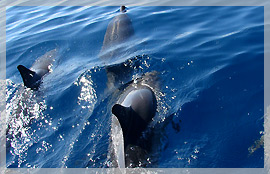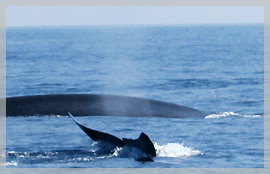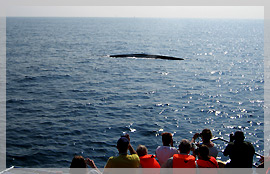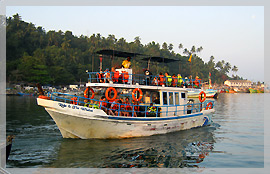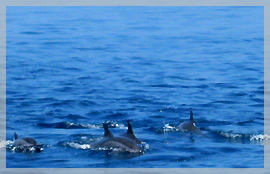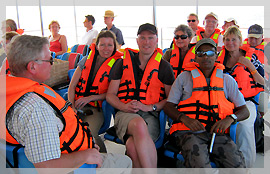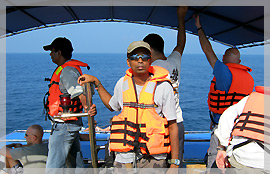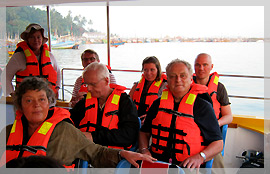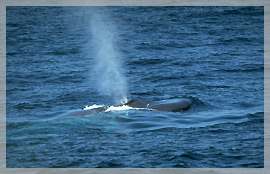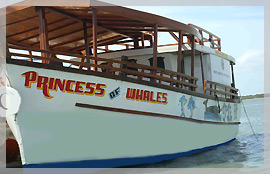|
Did you know?
- That 30 species of whales, dolphin, and porpoises (collectively known as cetaceans) can be seen off the Sri Lankan coasts.
- That over 100 cetacean sightings have been recorded to the Sea Watch Team, SEALS national sightings data base since 1996
Dolphins, Porpoises & Whales – what’s the difference
All cetaceans are supremely adapted to life in the oceans. Dolphins, Porpoises & whales all belong to a group of warm-blooded, breath air &suckle their young. But how do you distinguish one from the other. The 80 species of cetaceans in the world are placed in two main groups. One group, the Mysticetes or baleen whales, with about 14 species, includes the largest whales, namely the blue & fin whales. Instead of teeth, they have long horny plates edged with bristle-like fibres which strain small marine animals from seawater. The other group includes the toothed whales or Odontocetes with around 65 species including the beaked whales. killer whales, pilot whales, dolphins & porpoises.
This group of animals range from the huge and awe-inspiring baleen whales to the toothed whales that inhabit the Sri Lankan Ocean. The largest mammal that has every lived on Earth is the immense blue whales that can reach a hundred feet in length and weight over 150 tons. The waters around Sri Lanka are inhabited by a high diversity of these wondrous species including the blue whale. Those who are fortunate enough to see these animals undisturbed in their natural habitat are filled with wonder at their immense beauty grace and intelligence.
Cetaceans (whales, dolphins & porpoises) are aquatic mammals, of which there are some 80 extant species distributed globally in marine & some fresh water habitats (IUCN, 1991; MacDonanalds, 1984)
As a consequence of human activities throughout the world, either as result of direct hunting or indirect impacts, about 15% of all cetaceans are considered endangered or vulnerable & others threatened or suspected to be threatened (IUCN, 1991)
Commercial dolphin & whale watching is a lucrative industry in many parts of the world today. More than 10 million people go to watch and wonder and be inspired by these animals each year, Commercial dolphin & whale watching tours are being operated in more than 90 countries around the world. In this respect Sri Lanka has great potential in that our seas have both an abundance and diversity of dolphin & whales. However, being short-sighted Sri Lankans, we are once more getting ready to “Kill the goose that lays the golden egg” to make quick money in an unsustainable manner. With an expectation of a tremendous boom in tourism of Sri Lanka whale watching excursions will attract many local and foreign tourists
Don’t Do it… Don’t Involved & Help Them…
OUR MAIN AIM IS TO HAVE THESE EXCURSIONS BY EDUCATING THE TOURISTS WITH FOLLOWINGS
IF SO, WE’D LIKE TO HEAR & KNOW ABOUT IT
- - How to minimize our impact.
- - Bow and stern-riding porpoises and whales.
- - Sore & Sea Birding
- - Marine Protect Areas, Wildlife Refuges, Ecological Reserves and Parks
- - The Laws
- - What is Disturbance?
- - Ethics of whale watch
- - Systematic sighting data collecting
HOW CAN YOU HELP
- - Become involved with a SEALS SWT & participate with dolphin & whale watching trips in systematic sighting surveys
- - Join the Sea Watch support group for quarterly newsletters
BOATS
- - Port Arrangements and Passes
- - The Crew
- - Equipment
- - Facilities
- - Safety Equipment
- - Port Safety
- - Seating
- - Public Liability Insurance
- - Vessel Records
- - Maintenance
- - Emergency Procedures & ISDA
- - Fire Equipment & Records
- - Gas Fuel Supplies and Installations
- - Emergency Communication
- - First Aid Provision
- - Written & Verbal Safety Briefing
- - Identification Field Key
- - Binoculars, Field Notebook
PACKAGE INCLUDES
- - Snack & Juice, Naturalist, SEALS/SWT T-shirt, CD, Free Membership & Discount Card for Next SEA Watch Tour
DURATION, PICKUP POINTS & SEASONS
- - West & Southwest- January to April / East & Southeast-July to October
- - Mirissa, Tangalle, Kalpitiya, Trinco & Pasikuda
- - Half a Day (Early Departure & Late Lunch Arrival)
WHAT TO BRING
- - Clothes to match the colors of the Ocean (Blue or White), Small back Pack
Make an Inquiry……
|
|

